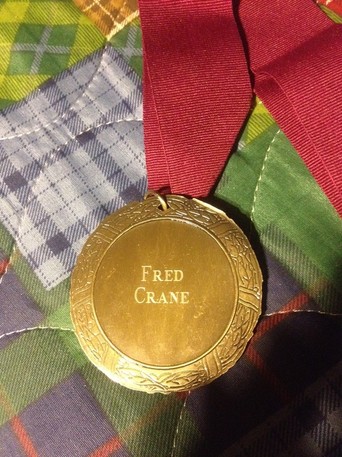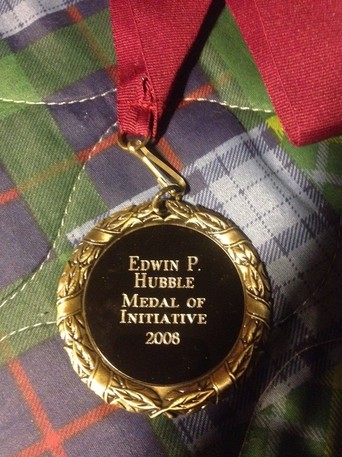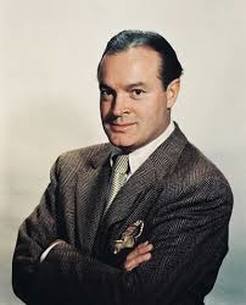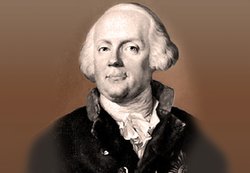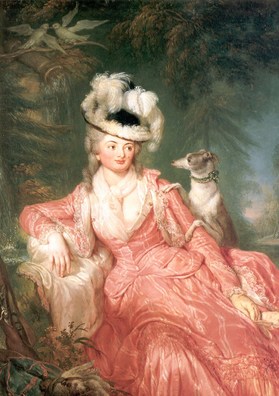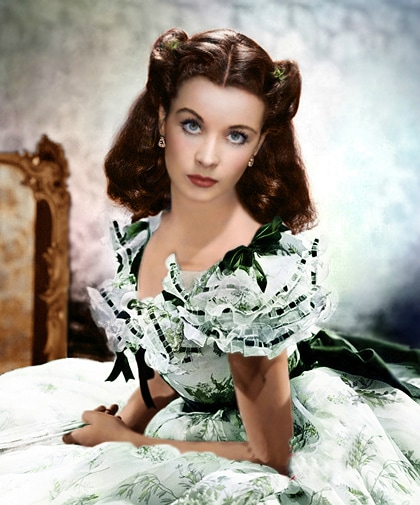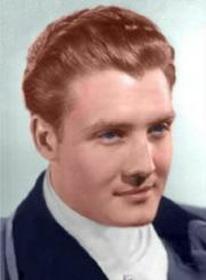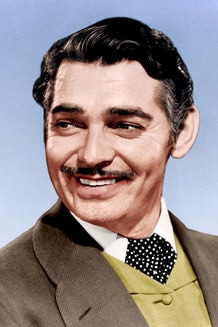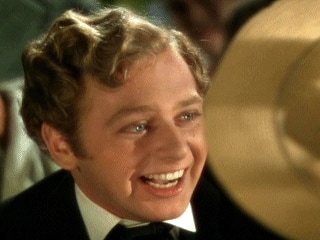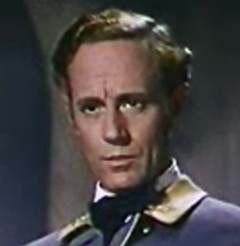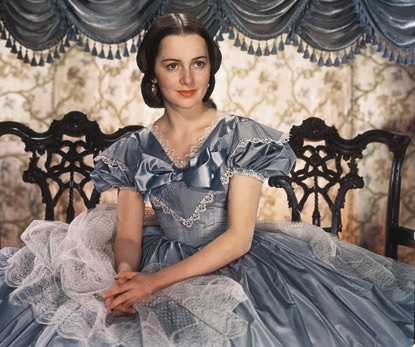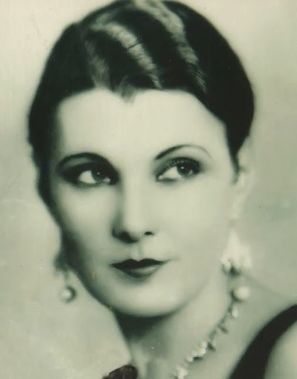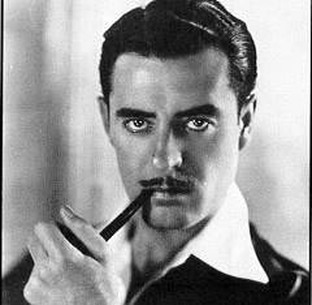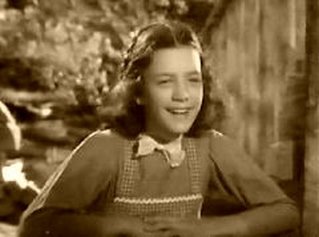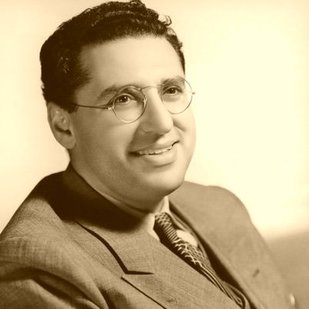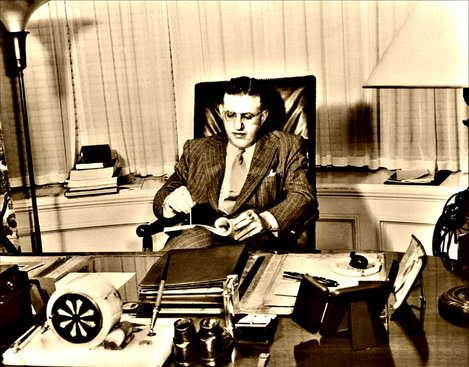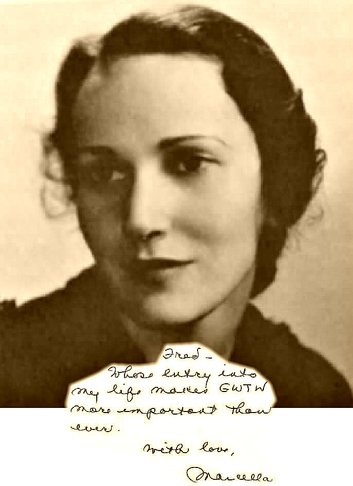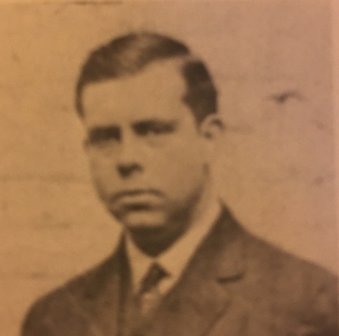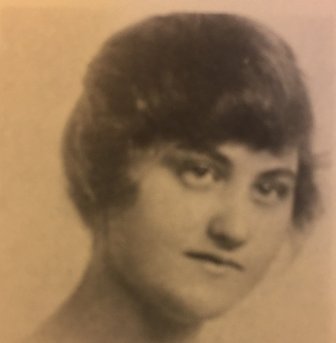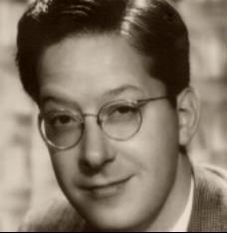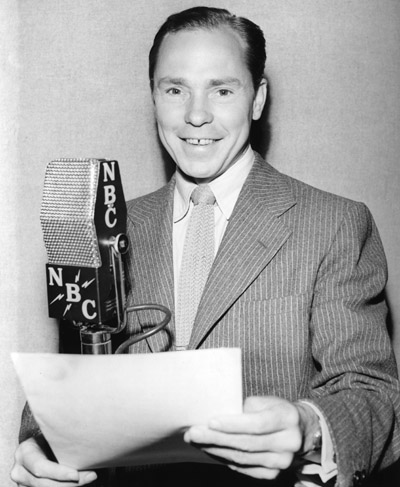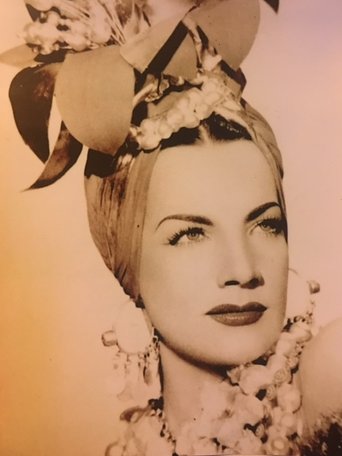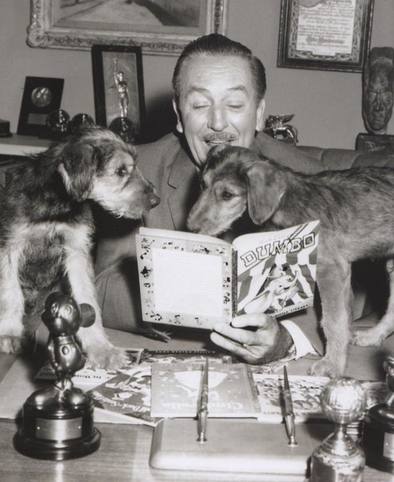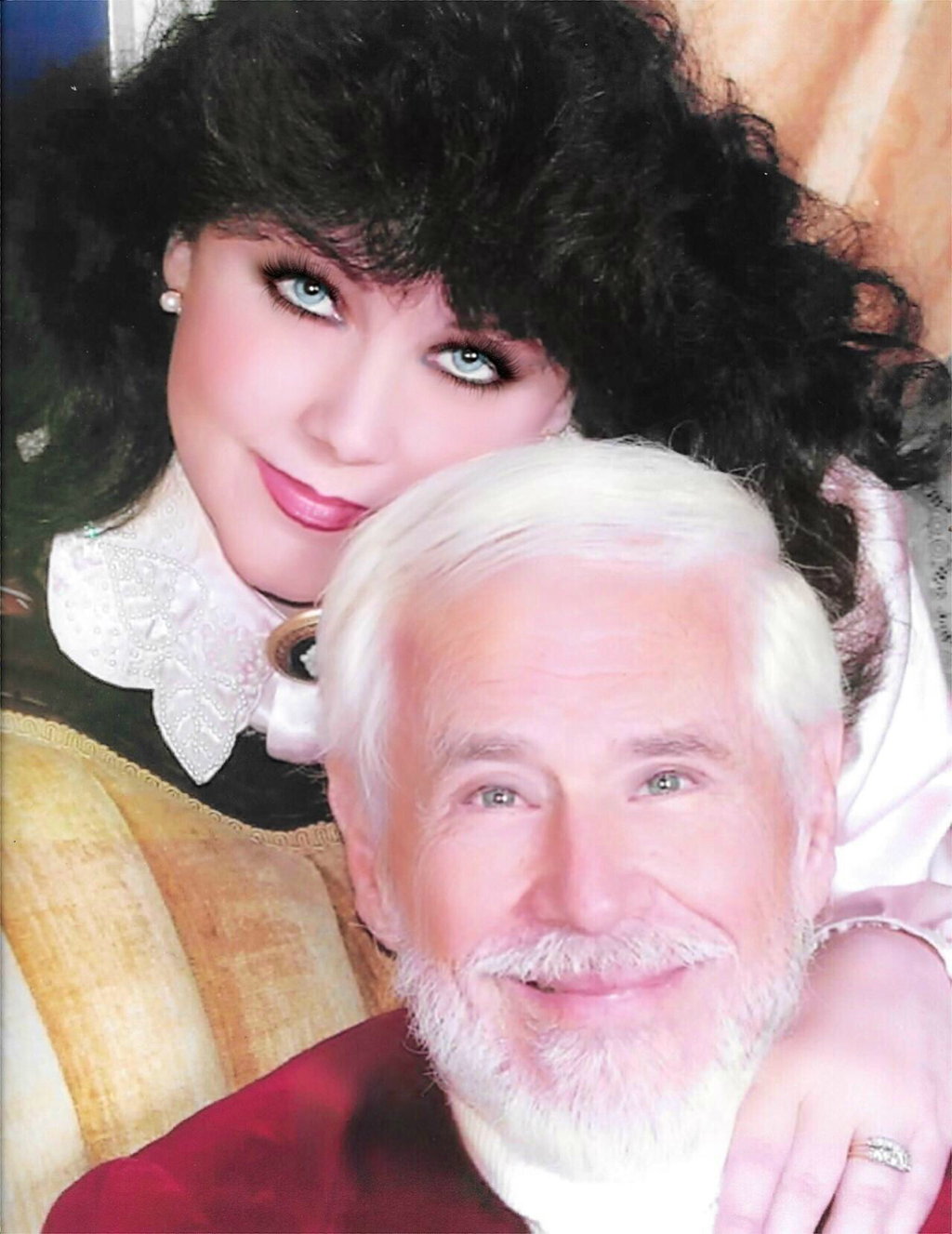FRED CRANE: A CHARMED LIFE REMEMBERED
By Terry Lynn Crane
Excerpt from a book regarding recipients of the Edwin P. Hubble Medal of Initiative
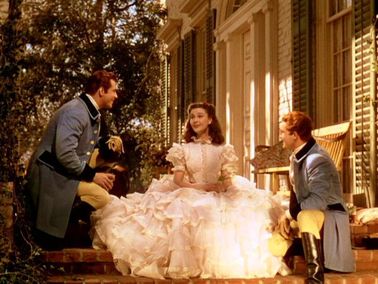
When I was asked to write a chapter containing at least 1,500 words about my dear Fred who was the proud recipient of the 2008 Edwin P. Hubble Medal of Initiative Award, I was all too happy to oblige. Then came the reality---how was I to adequately sum up a life so complex and multi-faceted in 1,500 words? At one of the Jivin’ Jacks and Jills Annual Banquets for the stars from the 30’s, 40’s and 50’s of Universal Studios, entertainer/actor/comedian, Bob Hope, who was seated next to Fred, commented to him, “I wish I had spoken the opening lines in ‘Gone With The Wind’!” Most people identify Fred Crane with “Brent Tarleton,” one of Scarlett O’Hara’s “Johnny Reb” suitors who spoke the opening lines and had scenes with Vivien Leigh, George Reeves, Clark Gable, Rand Brooks, Leslie Howard, Olivia de Havilland and others in David O. Selznick’s classic movie, “Gone With The Wind,” but this was only a very small portion of what Fred Crane accomplished in his 90 years on this Earth plane. One’s uniqueness and complete personage is calculated by the sum of one’s life experiences. Life experiences play an enormous role in the complete development of our personality, character and overall psyche.
Fred Crane was one of the most erudite, southern gentleman I have ever met. He could speak seven languages and dance as well as Fred Astaire. He was a gifted raconteur, actor, artist, and most importantly, a lover of mankind, a loving husband, father and loyal friend. He thought all people were sui generes (one-of-a kind) and relished in discovering the true depth of an individual upon meeting them.
The expression, “Life is what happens to you while you’re planning to do something else,” smacks of what comes to all. Timing? Chance? Destiny? We do not know all the great mysteries of the universe; however, for a young boy, Herman Frederick Crane, who grew up during The Great Depression in New Orleans, Louisiana, he had an ordinary childhood for the time. His father was a third generation dentist and his mother’s lineage was from Frederick William, II, King of Prussia and Wilhelmina Enke, Countess von Lichtenau. The way they lived seemed to be the way everyone lived. Fred was “as happy as a worm in a bottle of horseradish.”
Fred’s father, Dr. Harry Lee Crane, was a gentle man with a good sense of humor and great technical understanding. He had to be unusual, because he went to college without ever attending high school and still graduated with honors. He played mandolin, soprano saxophone, piano and trombone when he wasn’t crowning a bicuspid. He had lost a great deal of money when the stock market crashed and the banks were closed. Folks didn’t have enough money to put food on the table---much less get their teeth fixed. There was a good deal of barter with the grocer, the ice man and other services taking place for everyday survival. There were no taxes at all at that time. Gasoline was eight cents a gallon. A passel of vegetables was a nickel. Soup bones and liver were free. There was no charge for water or collecting garbage, which was picked up every day---not just once a week. Elementary and high school education, as well as books, were free. A three-piece suit was nine dollars. One could ride the streetcar all day on transfers for seven cents. The rules for behavior required respect for others; and, good parents would inculcate positive messages with a constant reminder to “be a producer, not a consumer.”
Fred’s mother, Haydee Vivian Gaschen Crane, was a beautiful, well-read, yet domineering woman whose tongue was as sharp as a two-edged sword. Her motto was, “You had better be doing something. If you don’t have something to do, then go scratch the wall.” She was a severe authoritarian--- although the judgments she imposed on him proved to be his salvation from anonymity.
His mother was not adverse to grabbing him firmly by the ear to do her bidding---sometimes it was to go to the store for her---Fred, a young child with his little wagon---to purchase a soup bunch of vegetables and she’d say “and don’t forget to stop by the butcher’s and get a bone for the dog!” Fred replied, “But, Mama, we don’t have a dog!” His mother repeated, “Just do as I say and ask the butcher for a bone for the dog!” It was actually to put in the soup for taste and nutrition. Many times, since Fred was the oldest son of three, his mother would have him “fight” for her ”honor” if she was accidentally brushed by someone while walking down a sidewalk. Sometimes, his mother would make him clean the house (e.g. sweep, wash the dishes, take care of his younger brothers, etc.). If he didn’t acquiesce to her requests quickly enough for her, she would come after him with a sour mop. Many times, for self-preservation, Fred would climb a tree next to their house and perch atop their roof while his mother screamed for him to come down and “take your medicine”---which was a sour mop in the face! He stayed on the roof until the coast was clear.
Fred was a hopeless mimic and could imitate anything and anyone. At the age of 10, Fred’s mother had him audition at Jerusalem Temple on St. Charles Avenue for the play, “Byrd’s Christmas Carol.” He did very well. Fred also performed at the Le Petite Theatre on St. Louis Street in the Vieux Carre (old French Quarter).
As a young child, Fred would walk to his father’s office which was located in the Audubon Building on Canal Street. He vividly remembered his father eagerly looking down the corridors to see if there would be a “live one” or a walk-in patient to bring in cash to buy food for the table. Young Fred asked him on one occasion, “Dad, what am I going to be when I grow up?” His father answered, “Son, take a four-year course in ignorance and get a fruit stand. You’ll never have to worry about comestibles.” Fred’s retort was, “But I want to be college-bred like you, Dad!” A crooked smile spread across his father’s face and he said something that will not go over well in academia, “Son, ‘college-bred’ is a bunch of crumbs with a lot of crust and plenty of dough, all gathered together for a loaf.” Needless to say, he did not take his father’s advice and went on to attend college at Tulane University with a football scholarship. It was pretty nice---books, tuition, a little spending cash, a room at the dormitory and a tutor. In football, he played a formation called the “single wing”. His coach was “Red” Dawson. Fred was a blocking halfback. His opponents would say, “Watch out for the guy with the red mustache!” He was known as the “Choo Choo Crane” and kept a bloody nose often as he would plow head on into his opponents. He was tough as a cob! His mother didn’t like the sports reviews in the newspaper, because they didn’t mention her son, Fred, carrying the ball and making touchdowns. Obviously, she didn’t understand the game. She wrote to “Red” Dawson the following, “If you don’t let my boy carry the ball more, I’ll pull him out of school!” When “Red” Dawson called Fred into his office, showed him the letter that his mother had written, Fred became so embarrassed that he ran away from home with his buddy, Dave Gore, after hocking his Dad’s pocket watch for $5.00. They hitchhiked and “rode the rails” for a couple of months up through Arkansas, the Carolinas, Kentucky and into Ohio and lived with the hobos in the “bo jungles”. He blew his scholarship. Upon returning, he attended J.A. Maybin Business College for a year and then Loyola University of the South and became interested in their Thespian Society directed by Dr. Alfred Bonomo. He decided that this was so gratifying attending school, learning and performing in theatre that he decided that he would do this until he was 50 and retire on the “Townsend Plan.” (There was no Social Security back then.) This was fun for him.
In 1938, his mother, who was trying to cope with the meager funds that his father was bringing in as a dentist, had been talking to a neighbor, Mrs. Schmaltz. The neighbor had regaled Fred’s mother with how her daughter, Louise, was doing so well in Hollywood, California under contract with Paramount and Cecil B. DeMille. Eureka! Fred’s mother, who, like most parents, wanted to get her strokes from the accomplishments of her progeny, and knowing that Fred was a hopeless mimic and actor, her irises turned to dollar signs! She thought that Fred was going to be the salvation for the “Crane Treasury” and make everything fine. Fred’s mother thought that he was going to fit perfectly in Hollywood and get in on all that money flow so he could send it back to the family which would dig them out of their indebtedness and deprivation (unbeknownst to Fred---her number one son.) Fred’s mother purchased attire for Fred that she thought was de rigueur or “in” for Hollywood. She also lifted $50.00 from her husband’s wallet---a heck of a lot of money at the time during the end of the Depression. She put 10 five dollar bills in his pocket and a one-way ticket on the passenger train, The Sunset Limited, out of New Orleans to Los Angeles, and said to him, “Boy, go out and get in the movies!” Go out and get in the movies?! He didn’t even know how to wash his neck, much less get in the movies! The only reason he knew how to brush his teeth was because his father was a dentist! However, Fred was thrilled to be leaving New Orleans, because he could get out from under the thumb of his domineering mother! His mother did one other thing for him and that was to get him a room in Hollywood at 1344 North Beechwood Drive, one block away from Sunset Boulevard, facing the rear entrance of Columbia Pictures. Fred’s mother negotiated the room at a rate of $7.00 a week, which included a big, comfortable room right in the heart of Hollywood, all the towels he needed, the use of a telephone and three square meals a day. The meals smelled absolutely magnificent; however, as the food was placed on the table, Mrs. McElwane’s mentally handicapped daughter, Ellie Mae, put her hands in her mouth, then stuck her hands in the food and repeated the process! Fred couldn’t help but notice that her teeth---what was left of them---were red and green in color. Fred had not been reared to that absence of sanitation. As Ellie Mae dipped her hands into the food, the poor soul said, “Boy, oh, boy, oh boy, oh boy!” That was the extent of her vocabulary. Fred felt extreme nausea. It didn’t take long for him to lose 25 pounds in a month! He just couldn’t eat there. The weight loss was primarily attributed to starvation and the rest was from taking jobs in the California heat at temperatures of 106 degrees working for 35 and 40 cents an hour. He worked hoeing weeds and pruning trees at Lockheed Air Terminal in Burbank. He cleaned excrement out of Gilbert the Lion’s cage at the zoo. He also swabbed the landing decks at Lockheed. Later, he made mincemeat and candied fruit at Baker’s and Confectioners Supply in downtown Los Angeles. He thought, “This is the life! I am footloose and fancy free and out from under my mother’s domineering thumb!”
Being alone in California for about a month was a great adventure for Fred, but soon he became homesick. His mother had two relations in California---one was Leatrice Joy, who had been a very good, silent film actress and her mother, Mamie Zeidler, who was a kind woman, devoutly religious (Christian Scientist) and blind. He spent much of his spare time visiting Aunt Mamie and reading the Bible to her as well as the corresponding passages in Science and Health and Key to the Scriptures by Mary Baker Eddy. He enjoyed his times with Aunt Mamie because he terribly missed his own great grandmother, Ernestine Hoppe Gaschen, who was born in 1841 and told him wonderful stories of the olden days. So, Aunt Mamie and Fred bonded. They genuinely enjoyed being with one another.
Aunt Mamie’s daughter, Leatrice, had been married to John Gilbert, a very handsome man who was a very popular actor in the 1920’s and 1930’s. They had a daughter together, little Leatrice Joy Gilbert. One morning when Fred was visiting with Aunt Mamie, Leatrice came over in a big limousine with her chauffeur and daughter. At the age of 14, little Leatrice Joy Gilbert had read Margaret Mitchell’s GONE WITH THE WIND and wanted to play the part of Suellen, Scarlett’s younger sister. When Leatrice witnessed how her mother and Fred had bonded with mutual affection, she said to Fred, “You look like a well-reared young man. Have you ever been in a motion picture studio?” Fred replied, “No, Mam.” She said, “Come on. We’re going out to Selznick’s in Culver City.” Selnick Schmelznick---Fred thought, “What a strange name!” Aunt Mamie encouraged Fred to go---so off they went to Selznick Studios. At the side entrance of the studio, he was witness to the jaw-dropping facades of various “towns” and “cities,” if you will. Wide-eyed with disbelief at this make believe, “Wow!” Fred thought. He was amazed! He wanted to see what they looked like on the inside, so he turned the doorknobs and discovered that the facades were held up by two-by-fours! He thought, “So THAT’S how they do it!” He was jolted out of his awe by Leatrice, who took him by the hand and into the office of casting director, Charles Richards. Leatrice Joy and Charles Richards embraced and kissed one another in the “Hollywood” manner and then she finally introduced her daughter, Little Leatrice, and then introduced Fred to Mr. Richards. Leatrice told Richards that he was from the South. (His accent, which certainly wasn’t typically “southern,” was a combination of New Orleanese, Brooklynese, Bostonese, mixed with a little patois Cajun.) Mr. Richards asked him, “Boy, have you ever done any theatre?” Fred answered, “Yes, Sir.” He pulled out a paper and asked Fred to read a line. He threw the line away for just what it was worth. Richards said, “Wait a minute.” He picked up the phone and dialed George Cukor, who had been with Selznick since he acquired the book in 1936 and was getting everything in place with the best personnel in the motion picture industry in every venue. Cukor and Fred read a line together. Cukor took Fred by the hand up to the office of the main man, David O. Selznick. This was in December of 1938. Fred didn’t know who any of these people were, what they were doing or what he was doing. He was introduced to David Selznick. A beautiful woman was sitting on a sofa next to him. She turned out to be Vivien Leigh. Selznick was negotiating her salary for playing the role of Scarlett in “Gone With The Wind”. Fred did not know who she was. He just knew that he must have been beet red as he looked upon this beautiful woman. Fred was shy and found it difficult to look a beautiful girl in the eye. He was still a virgin. (Here he was from the “Cesspool of Iniquity” and that “Red Light District,” New Orleans, and transported to the “Sodom and Gomorrah” of the United States, called Hollywood and still a virgin! There was no contact with the distaff side and no talk of sex or anything of that sort in his straight-laced household.) Not to worry---after a little talk with Cukor, Selznick called to Marcella Rabwin, his assistant producer and executive assistant, to bring in two scripts. Without further adieu, Fred was directed to read both parts of the Tarleton Twins with Vivien and they threw those lines away as if they were their own or as if they had done the dialogue a thousand times together. Out of the corner of his eye, Fred saw a smile on Selznick’s face. He called to Marcella once again. He said, “Marcella, please bring in a stock contact.” They said, “Sign here.” No more than a quarter of an hour had elapsed from the time Fred hit that studio, when he was cast by David O. Selznick, George Cukor and Charles Richards and under contract to provide the opening lines as “Brent Tarleton” or as both Tarleton Twins in a process shot, in the great “Hallmark of the Cinematographer’s Art, “Gone With The Wind”. Had Fred known that he was auditioning for a role in “Gone With The Wind,” he said that his legs would have turned to Jell-O! Think of this---he wasn’t looking for a job and had only come along for the ride. He had never been in a movie studio, nor had he read Margaret Mitchell’s book! Some weeks later, George Bessolo, whose agent later changed his name to George Reeves, appeared on the scene. Selznick saw how closely Fred and George resembled (facially and physically); so, he cast George as Stuart Tarleton. (George Reeves would later trade in that red hair as a Tarleton Twin for a red cape as Superman in the television series, “The Adventures of Superman”.) A piece of trivia is that the movie credits are incorrect. Since Fred speaks the first line in “Gone With The Wind” as Brent Tarleton, (“What do we care if we were expelled from college, Scarlett? The war’s going to start any day now, so we’d have left college anyhow!”) he should be listed at the top, “Fred Crane as Brent Tarleton”. Instead it is listed, “George Reeves as Brent Tarleton”. In the dialog in the opening scene, George is speaking the following lines, “You ARE going to dance with us, Scarlett---first Brent, then me, then Brent, then me.” Now, with George speaking those lines, how can George be Brent? Anyway, maybe the man who typed the credits on the movie went to lunch, had a few drinks, came back and, in his drunken stupor, switched the names! Who knows?! Anyway, there is a parallel to this in the Bible in the Book of Ecclesiastes, “I returned, and saw under the sun, (probably a metaphor for an epiphany) that the race is not to the swift, nor the battle to the strong, neither yet bread to the wise, nor yet riches to men of understanding, nor yet favor to men of skill; but time and chance happeneth to them all.” Ecclesiastes 9:11 Luck---good fortune, you might call it; so, this is the genesis of a career.
When Fred was in New Orleans, he attended Alcee Fortier High School with a classmate by the name of “Kiki” Reed. His family had lived in Chile, South America, because he father was an engineer there. In 1940, while Fred was attending a class at Max Rheinhart’s (famous German director) to learn Fundamentals of Speech, Commercial Writing, Radio Drama and Broadcasting Techniques, he was reunited with his old friend, “Kiki” who was also attending the class. Many a great supper he had with him, his brother, Kenny, and sister, Diana, who was also studying drama at Rheinhart’s. (Kenny Reed, incidentally, was later the set director on “I Love Lucy” starring Lucille Ball and Desi Arnaz.) Fred had the occasion to date Diana once (not knowing that she was engaged to Herbert Spencer, a music arranger at Fox Studios, who ghosted for composer, Alfred Newman, who headed the Music Department at Fox Studios.)
Another classmate of Fred’s at Rheinhart’s was Dick Beatty. When Dick found out that Fred had no date, he said, “My wife, Shan, knows a pretty, young, single girl named Marcelle.” So, Dick and Shan introduced Fred to Marcelle Dudley, whose father, Charles Dudley, had been an actor on stage with none other than actor, Lon Chaney. Charles’ eyes were so light blue that the old Clieg lights blunked out his eyes on film, so he switched to make-up and became the head makeup man at Fox Western Studios. Several weeks after Fred had one date with Marcelle, he telephoned her. Actor, Jackie Coogan’s friend, Carter Spetner, had invited Fred and a date to a pool party at Jackie’s house; so he decided to invite Marcelle to accompany him to the party. They began dating regularly and later married in Pasadena. Fred’s good friend, George (Bessolo) Reeves, who portrayed his twin, Stuart Tarleton, served as his Best Man in 1940. Can you imagine having Superman as your Best Man? Actually, George had not yet been awarded the role of Superman. George was just a regular, fun-loving fellow. They shared a mutual fondness for each other and spent most of that period together. During and after World War II, circumstances occasioned that they take different paths. They would occasionally meet and catch up on their respective lives.
Herbert “Herbie” Spencer, who was also from Chile, had been sent to the United States to study engineering, but, curiously, became fascinated with music and wound up with the Vincent Lopez Band. Also, he was a roommate of none other than the famous big band leader and composer, Glenn Miller. Herbie was a film composer and orchestrator. He worked on twenty-four films with composer/arranger/conductor, Alfred Newman and composed and orchestrated for many of Shirley Temple’s movies. From 1974, he collaborated with composer, John Williams, as orchestrator and arranger for many of his film scores such as the original Star Wars Trilogy, E.T. The Extra-Terrestrial and the Indiana Jones film series. (Ironically, Fred and I had many parallels in our lives. We had both lived in New Orleans, worked in broadcasting in California, my late father-in-law was Glenn Miller’s lead singer, Ray Eberle, and I was the Chairman of the Shirley Temple Collectors Convention in Atlanta in 2000. Also, our families were both German. It was truly amazing.)
When Diana Reed married Herbie Spencer, they would visit Marcelle and Fred on Benedict Canyon and Easton Drive when World War II was on. Around 1942 or so, they were invited to a party at the Spencer’s on Crescent Heights Boulevard for a rather intimate gathering attended by a variety of very talented and fun-loving individuals. There was Harry Warren, who was one of the greatest American composers of the 20th Century, penning songs such as “Down Argentine Way,” “Forty-Second Street,” “Chattanooga Choo Choo” and over 800 more tunes. Johnny Mercer was at the party. Johnny was a popular American songwriter/lyricist and singer. He wrote the lyrics to more than 1,000 songs, including songs for movies and Broadway shows and received nineteen Academy Award nominations. Some of his songs included, “I’m An Old Cowhand from the Rio Grande” and “Moon River”. He was also the Co-founder of Capitol Records. Also, in attendance, was Carmen Miranda, a vivacious, little lady with a darling, upside-down smile, known as the “Brazilian Bombshell” from Sao Paulo, Brazil, near Rio de Janeiro. At only 5 feet tall, this flamboyant performer often wore platform sandals or buskins, as they were called, and towering headdresses made of fruit, becoming famous as “the lady in the tutti-fruitti hat”. You might recognize the name of another gentleman who was at the Spencer’s party. He looked quite unassuming and was smallish in stature and very amicable---none other than Walt Disney. Walt, as you will probably know, was one of the most influential and innovative figures in the field of entertainment during the Twentieth Century. He became one of the best-known motion picture producers in the world. He was also a director, screenwriter, voice actor, animator, entrepreneur, philanthropist, and, of course, the creator of the famous cartoon character, Mickey Mouse. One of our favorite quotes by Walt Disney is “Somehow I can’t believe there are any heights that can’t be scaled by a man who knows the secret of making dreams come true. This special secret, it seems to me, can be summarized in four C’s. They are Curiosity, Confidence, Courage and Constancy and the greatest of these is Confidence. When you believe a thing, believe it all the way, implicitly and unquestionably.” The Disney film, “Saludos Amigos,” was being filmed and Herbie was the Latin connection. While Carmen Miranda’s musical group, Bando da Lua, also at the party, was playing Samba music, Carmen decided to try to teach the group how to Samba. Everyone flunked with the “Club Foot Syndrome” except for Fred, who took to the Pre-Bossa Nova rhythm hook, line and sinker. Carmen was delighted to teach Fred how to Samba. Years later, Fred vividly remembered the tune that the Bando da Lua played while he danced with Carmen Miranda and could play it on the harmonica. (By the way, Fred was very accomplished in playing the harmonica and could play any song on it by ear.) At the party, he also recalled Herbie Spencer at the piano playing or arranging the song, “Old Black Magic,” which Johnny Mercer had just finished composing.
When they discovered that Marcelle was with child, Fred took his first steady job in order to provide security for his new family, as the sporadic work of an actor made one rich one day and then poor for a month. He took a job as a Grinder in the Machine Shop at Criterion Machine in Beverly Hills in 1940. He burred parts for aircraft. Later, other positions he held were: Production Developer, a Field Engineer, Cost Analyst at Douglas Aircraft Company, Real Estate Developer and Builder and an Instructor at F.H. Speare Radio Institute, where he taught Gene Roddenberry, the creator of Star Trek. Fred also attended California Institute of Medical Technology where he studied laboratory technique. He was in partnership at El Santa Nino Hospital and performed laboratory techniques, hematology, urinalysis, blood chemistry, electro cardiography, x-ray, serology and cultures; so, to say the least, Fred’s employment experience was quite diverse.
Fred had a deep fascination with radio and the way it could stimulate the listener’s imagination. Among his early radio credits were: multitudes of radio dramas for Armed Forces Radio, “Dr. Christian,” “The Jack Benny Show,” “The Lucky Strike Hit Parade,” “Calling All Cars,” and “The Jack Parr Show.” He took a position as a Classical Music Host at KFAC in Los Angeles and mastered the complexities of the radio console as well as the precise pronunciations of the classical works and their composers in a multitude of foreign languages. He broadcasted classical music programs, conducted interviews, performed narrations, as well as voice-overs and commercials. He was recognized as one of Los Angeles’ foremost classical radio announcers for 40 years.
Throughout the years, Fred appeared in a variety of television shows including “77 Sunset Strip,” “Surfside 6,” “Roaring 20s,” “Follow The Sun,” “Lost in Space,” “Voyage to the Bottom of the Sea,” “Peyton Place,” “General Hospital,” “Superior Court,” “Twilight Zone,” “Lawman,” “Zorro,” “Hawaiian Eye,” “To Tell The Truth” and “The Judge” to name a few. In addition to “Gone With The Wind”, he also appeared in the movie, “The Cisco Kid.” When most people would have retired, Fred Crane was still going strong (like the Energizer Bunny) working in radio until he was the age of 70 and the station was sold as a rocker. He continued to endorse products, became a spokesperson for The Clark Gable Foundation, Blue and Gray Magazine and Caesar’s Palace Casino and performed cartoon voice-overs. Fred was the guest speaker at various universities, movie events, corporate functions, various clubs, organizations, department stores and on cruise lines. He also narrated the museum exhibits at The Road to Tara Museum in Jonesboro, Georgia.
Fred and I married in 1999 and purchased an antebellum home in Barnesville, Georgia, circa 1849, in 2000, renovated it and opened Tarleton Oaks, a Gone With The Wind-themed bed and breakfast, where we entertained lovers and aficionados of the movie from all over the world. In 2002, we opened The Gone With The Wind Hall of Stars Museum inside Tarleton Oaks which housed hundreds of items and costumes which had been owned and/or worn by many of the “Gone With The Wind” cast members such as Vivien Leigh, Clark Gable, Olivia de Havilland, Leslie Howard, George Reeves, Butterfly McQueen and others as well as displayed autographed photographs throughout the hallways.
Fred had many extra-curricular interests which included: storytelling, motorcycle riding, sports cars, shooting and had amassed a huge firearms collection. He enjoyed archery, dancing, cartooning, sketching, painting, dialects, foreign pronunciations, walking and exercising on the beach and playing the harmonica.
Fred Crane’s image has appeared on numerous collectibles such as plates, music boxes, paper dolls, games, candy boxes, cups, posters, as well as books, book covers, magazines, newspapers, etc.
Fred was booked as a highly sought-after speaker at conventions, schools, organizations, various functions and events until just before his physical death on August 21, 2008.
So, how can I adequately write about a man who continues to entertain and inspire people all over the world? He touched and continues to touch so many lives with his love, gifts and talent. I can tell you for certain that life continues beyond physical death from this “veil of tears.” Fred continues to contact me from time to time as I go about my everyday life and also through dreams. He also assisted me from The Other Side with FIDDLE DEE DEE RECIPES: A TASTE OF “GONE WITH THE WIND” which contains behind-the-scene stories, cast information, scenes cut from the movie and much more and, quite miraculously, put me in touch with the President of GWTW Partners, LLC which is where I obtained permissions from them and Warner Brothers in order to publish the book. He also has assisted me in writing our book project, FROM TARA TO TARLETON OAKS: A GONE WITH THE WIND SCRAPBOOK and GONE WITH THE PEN: A JOURNEY TO THE HEART from The Other Side. I can truly say that the 2008 Edwin P. Hubble Medal of Initiative Award was most merited and Fred Crane was most humbled by the esteemed honor to be in the company of United States Presidents, First Ladies, authors, presidential descendants, entertainers, humanitarians and other people of high repute. Congratulations to all the recipients of this esteemed award.
Fred Crane was one of the most erudite, southern gentleman I have ever met. He could speak seven languages and dance as well as Fred Astaire. He was a gifted raconteur, actor, artist, and most importantly, a lover of mankind, a loving husband, father and loyal friend. He thought all people were sui generes (one-of-a kind) and relished in discovering the true depth of an individual upon meeting them.
The expression, “Life is what happens to you while you’re planning to do something else,” smacks of what comes to all. Timing? Chance? Destiny? We do not know all the great mysteries of the universe; however, for a young boy, Herman Frederick Crane, who grew up during The Great Depression in New Orleans, Louisiana, he had an ordinary childhood for the time. His father was a third generation dentist and his mother’s lineage was from Frederick William, II, King of Prussia and Wilhelmina Enke, Countess von Lichtenau. The way they lived seemed to be the way everyone lived. Fred was “as happy as a worm in a bottle of horseradish.”
Fred’s father, Dr. Harry Lee Crane, was a gentle man with a good sense of humor and great technical understanding. He had to be unusual, because he went to college without ever attending high school and still graduated with honors. He played mandolin, soprano saxophone, piano and trombone when he wasn’t crowning a bicuspid. He had lost a great deal of money when the stock market crashed and the banks were closed. Folks didn’t have enough money to put food on the table---much less get their teeth fixed. There was a good deal of barter with the grocer, the ice man and other services taking place for everyday survival. There were no taxes at all at that time. Gasoline was eight cents a gallon. A passel of vegetables was a nickel. Soup bones and liver were free. There was no charge for water or collecting garbage, which was picked up every day---not just once a week. Elementary and high school education, as well as books, were free. A three-piece suit was nine dollars. One could ride the streetcar all day on transfers for seven cents. The rules for behavior required respect for others; and, good parents would inculcate positive messages with a constant reminder to “be a producer, not a consumer.”
Fred’s mother, Haydee Vivian Gaschen Crane, was a beautiful, well-read, yet domineering woman whose tongue was as sharp as a two-edged sword. Her motto was, “You had better be doing something. If you don’t have something to do, then go scratch the wall.” She was a severe authoritarian--- although the judgments she imposed on him proved to be his salvation from anonymity.
His mother was not adverse to grabbing him firmly by the ear to do her bidding---sometimes it was to go to the store for her---Fred, a young child with his little wagon---to purchase a soup bunch of vegetables and she’d say “and don’t forget to stop by the butcher’s and get a bone for the dog!” Fred replied, “But, Mama, we don’t have a dog!” His mother repeated, “Just do as I say and ask the butcher for a bone for the dog!” It was actually to put in the soup for taste and nutrition. Many times, since Fred was the oldest son of three, his mother would have him “fight” for her ”honor” if she was accidentally brushed by someone while walking down a sidewalk. Sometimes, his mother would make him clean the house (e.g. sweep, wash the dishes, take care of his younger brothers, etc.). If he didn’t acquiesce to her requests quickly enough for her, she would come after him with a sour mop. Many times, for self-preservation, Fred would climb a tree next to their house and perch atop their roof while his mother screamed for him to come down and “take your medicine”---which was a sour mop in the face! He stayed on the roof until the coast was clear.
Fred was a hopeless mimic and could imitate anything and anyone. At the age of 10, Fred’s mother had him audition at Jerusalem Temple on St. Charles Avenue for the play, “Byrd’s Christmas Carol.” He did very well. Fred also performed at the Le Petite Theatre on St. Louis Street in the Vieux Carre (old French Quarter).
As a young child, Fred would walk to his father’s office which was located in the Audubon Building on Canal Street. He vividly remembered his father eagerly looking down the corridors to see if there would be a “live one” or a walk-in patient to bring in cash to buy food for the table. Young Fred asked him on one occasion, “Dad, what am I going to be when I grow up?” His father answered, “Son, take a four-year course in ignorance and get a fruit stand. You’ll never have to worry about comestibles.” Fred’s retort was, “But I want to be college-bred like you, Dad!” A crooked smile spread across his father’s face and he said something that will not go over well in academia, “Son, ‘college-bred’ is a bunch of crumbs with a lot of crust and plenty of dough, all gathered together for a loaf.” Needless to say, he did not take his father’s advice and went on to attend college at Tulane University with a football scholarship. It was pretty nice---books, tuition, a little spending cash, a room at the dormitory and a tutor. In football, he played a formation called the “single wing”. His coach was “Red” Dawson. Fred was a blocking halfback. His opponents would say, “Watch out for the guy with the red mustache!” He was known as the “Choo Choo Crane” and kept a bloody nose often as he would plow head on into his opponents. He was tough as a cob! His mother didn’t like the sports reviews in the newspaper, because they didn’t mention her son, Fred, carrying the ball and making touchdowns. Obviously, she didn’t understand the game. She wrote to “Red” Dawson the following, “If you don’t let my boy carry the ball more, I’ll pull him out of school!” When “Red” Dawson called Fred into his office, showed him the letter that his mother had written, Fred became so embarrassed that he ran away from home with his buddy, Dave Gore, after hocking his Dad’s pocket watch for $5.00. They hitchhiked and “rode the rails” for a couple of months up through Arkansas, the Carolinas, Kentucky and into Ohio and lived with the hobos in the “bo jungles”. He blew his scholarship. Upon returning, he attended J.A. Maybin Business College for a year and then Loyola University of the South and became interested in their Thespian Society directed by Dr. Alfred Bonomo. He decided that this was so gratifying attending school, learning and performing in theatre that he decided that he would do this until he was 50 and retire on the “Townsend Plan.” (There was no Social Security back then.) This was fun for him.
In 1938, his mother, who was trying to cope with the meager funds that his father was bringing in as a dentist, had been talking to a neighbor, Mrs. Schmaltz. The neighbor had regaled Fred’s mother with how her daughter, Louise, was doing so well in Hollywood, California under contract with Paramount and Cecil B. DeMille. Eureka! Fred’s mother, who, like most parents, wanted to get her strokes from the accomplishments of her progeny, and knowing that Fred was a hopeless mimic and actor, her irises turned to dollar signs! She thought that Fred was going to be the salvation for the “Crane Treasury” and make everything fine. Fred’s mother thought that he was going to fit perfectly in Hollywood and get in on all that money flow so he could send it back to the family which would dig them out of their indebtedness and deprivation (unbeknownst to Fred---her number one son.) Fred’s mother purchased attire for Fred that she thought was de rigueur or “in” for Hollywood. She also lifted $50.00 from her husband’s wallet---a heck of a lot of money at the time during the end of the Depression. She put 10 five dollar bills in his pocket and a one-way ticket on the passenger train, The Sunset Limited, out of New Orleans to Los Angeles, and said to him, “Boy, go out and get in the movies!” Go out and get in the movies?! He didn’t even know how to wash his neck, much less get in the movies! The only reason he knew how to brush his teeth was because his father was a dentist! However, Fred was thrilled to be leaving New Orleans, because he could get out from under the thumb of his domineering mother! His mother did one other thing for him and that was to get him a room in Hollywood at 1344 North Beechwood Drive, one block away from Sunset Boulevard, facing the rear entrance of Columbia Pictures. Fred’s mother negotiated the room at a rate of $7.00 a week, which included a big, comfortable room right in the heart of Hollywood, all the towels he needed, the use of a telephone and three square meals a day. The meals smelled absolutely magnificent; however, as the food was placed on the table, Mrs. McElwane’s mentally handicapped daughter, Ellie Mae, put her hands in her mouth, then stuck her hands in the food and repeated the process! Fred couldn’t help but notice that her teeth---what was left of them---were red and green in color. Fred had not been reared to that absence of sanitation. As Ellie Mae dipped her hands into the food, the poor soul said, “Boy, oh, boy, oh boy, oh boy!” That was the extent of her vocabulary. Fred felt extreme nausea. It didn’t take long for him to lose 25 pounds in a month! He just couldn’t eat there. The weight loss was primarily attributed to starvation and the rest was from taking jobs in the California heat at temperatures of 106 degrees working for 35 and 40 cents an hour. He worked hoeing weeds and pruning trees at Lockheed Air Terminal in Burbank. He cleaned excrement out of Gilbert the Lion’s cage at the zoo. He also swabbed the landing decks at Lockheed. Later, he made mincemeat and candied fruit at Baker’s and Confectioners Supply in downtown Los Angeles. He thought, “This is the life! I am footloose and fancy free and out from under my mother’s domineering thumb!”
Being alone in California for about a month was a great adventure for Fred, but soon he became homesick. His mother had two relations in California---one was Leatrice Joy, who had been a very good, silent film actress and her mother, Mamie Zeidler, who was a kind woman, devoutly religious (Christian Scientist) and blind. He spent much of his spare time visiting Aunt Mamie and reading the Bible to her as well as the corresponding passages in Science and Health and Key to the Scriptures by Mary Baker Eddy. He enjoyed his times with Aunt Mamie because he terribly missed his own great grandmother, Ernestine Hoppe Gaschen, who was born in 1841 and told him wonderful stories of the olden days. So, Aunt Mamie and Fred bonded. They genuinely enjoyed being with one another.
Aunt Mamie’s daughter, Leatrice, had been married to John Gilbert, a very handsome man who was a very popular actor in the 1920’s and 1930’s. They had a daughter together, little Leatrice Joy Gilbert. One morning when Fred was visiting with Aunt Mamie, Leatrice came over in a big limousine with her chauffeur and daughter. At the age of 14, little Leatrice Joy Gilbert had read Margaret Mitchell’s GONE WITH THE WIND and wanted to play the part of Suellen, Scarlett’s younger sister. When Leatrice witnessed how her mother and Fred had bonded with mutual affection, she said to Fred, “You look like a well-reared young man. Have you ever been in a motion picture studio?” Fred replied, “No, Mam.” She said, “Come on. We’re going out to Selznick’s in Culver City.” Selnick Schmelznick---Fred thought, “What a strange name!” Aunt Mamie encouraged Fred to go---so off they went to Selznick Studios. At the side entrance of the studio, he was witness to the jaw-dropping facades of various “towns” and “cities,” if you will. Wide-eyed with disbelief at this make believe, “Wow!” Fred thought. He was amazed! He wanted to see what they looked like on the inside, so he turned the doorknobs and discovered that the facades were held up by two-by-fours! He thought, “So THAT’S how they do it!” He was jolted out of his awe by Leatrice, who took him by the hand and into the office of casting director, Charles Richards. Leatrice Joy and Charles Richards embraced and kissed one another in the “Hollywood” manner and then she finally introduced her daughter, Little Leatrice, and then introduced Fred to Mr. Richards. Leatrice told Richards that he was from the South. (His accent, which certainly wasn’t typically “southern,” was a combination of New Orleanese, Brooklynese, Bostonese, mixed with a little patois Cajun.) Mr. Richards asked him, “Boy, have you ever done any theatre?” Fred answered, “Yes, Sir.” He pulled out a paper and asked Fred to read a line. He threw the line away for just what it was worth. Richards said, “Wait a minute.” He picked up the phone and dialed George Cukor, who had been with Selznick since he acquired the book in 1936 and was getting everything in place with the best personnel in the motion picture industry in every venue. Cukor and Fred read a line together. Cukor took Fred by the hand up to the office of the main man, David O. Selznick. This was in December of 1938. Fred didn’t know who any of these people were, what they were doing or what he was doing. He was introduced to David Selznick. A beautiful woman was sitting on a sofa next to him. She turned out to be Vivien Leigh. Selznick was negotiating her salary for playing the role of Scarlett in “Gone With The Wind”. Fred did not know who she was. He just knew that he must have been beet red as he looked upon this beautiful woman. Fred was shy and found it difficult to look a beautiful girl in the eye. He was still a virgin. (Here he was from the “Cesspool of Iniquity” and that “Red Light District,” New Orleans, and transported to the “Sodom and Gomorrah” of the United States, called Hollywood and still a virgin! There was no contact with the distaff side and no talk of sex or anything of that sort in his straight-laced household.) Not to worry---after a little talk with Cukor, Selznick called to Marcella Rabwin, his assistant producer and executive assistant, to bring in two scripts. Without further adieu, Fred was directed to read both parts of the Tarleton Twins with Vivien and they threw those lines away as if they were their own or as if they had done the dialogue a thousand times together. Out of the corner of his eye, Fred saw a smile on Selznick’s face. He called to Marcella once again. He said, “Marcella, please bring in a stock contact.” They said, “Sign here.” No more than a quarter of an hour had elapsed from the time Fred hit that studio, when he was cast by David O. Selznick, George Cukor and Charles Richards and under contract to provide the opening lines as “Brent Tarleton” or as both Tarleton Twins in a process shot, in the great “Hallmark of the Cinematographer’s Art, “Gone With The Wind”. Had Fred known that he was auditioning for a role in “Gone With The Wind,” he said that his legs would have turned to Jell-O! Think of this---he wasn’t looking for a job and had only come along for the ride. He had never been in a movie studio, nor had he read Margaret Mitchell’s book! Some weeks later, George Bessolo, whose agent later changed his name to George Reeves, appeared on the scene. Selznick saw how closely Fred and George resembled (facially and physically); so, he cast George as Stuart Tarleton. (George Reeves would later trade in that red hair as a Tarleton Twin for a red cape as Superman in the television series, “The Adventures of Superman”.) A piece of trivia is that the movie credits are incorrect. Since Fred speaks the first line in “Gone With The Wind” as Brent Tarleton, (“What do we care if we were expelled from college, Scarlett? The war’s going to start any day now, so we’d have left college anyhow!”) he should be listed at the top, “Fred Crane as Brent Tarleton”. Instead it is listed, “George Reeves as Brent Tarleton”. In the dialog in the opening scene, George is speaking the following lines, “You ARE going to dance with us, Scarlett---first Brent, then me, then Brent, then me.” Now, with George speaking those lines, how can George be Brent? Anyway, maybe the man who typed the credits on the movie went to lunch, had a few drinks, came back and, in his drunken stupor, switched the names! Who knows?! Anyway, there is a parallel to this in the Bible in the Book of Ecclesiastes, “I returned, and saw under the sun, (probably a metaphor for an epiphany) that the race is not to the swift, nor the battle to the strong, neither yet bread to the wise, nor yet riches to men of understanding, nor yet favor to men of skill; but time and chance happeneth to them all.” Ecclesiastes 9:11 Luck---good fortune, you might call it; so, this is the genesis of a career.
When Fred was in New Orleans, he attended Alcee Fortier High School with a classmate by the name of “Kiki” Reed. His family had lived in Chile, South America, because he father was an engineer there. In 1940, while Fred was attending a class at Max Rheinhart’s (famous German director) to learn Fundamentals of Speech, Commercial Writing, Radio Drama and Broadcasting Techniques, he was reunited with his old friend, “Kiki” who was also attending the class. Many a great supper he had with him, his brother, Kenny, and sister, Diana, who was also studying drama at Rheinhart’s. (Kenny Reed, incidentally, was later the set director on “I Love Lucy” starring Lucille Ball and Desi Arnaz.) Fred had the occasion to date Diana once (not knowing that she was engaged to Herbert Spencer, a music arranger at Fox Studios, who ghosted for composer, Alfred Newman, who headed the Music Department at Fox Studios.)
Another classmate of Fred’s at Rheinhart’s was Dick Beatty. When Dick found out that Fred had no date, he said, “My wife, Shan, knows a pretty, young, single girl named Marcelle.” So, Dick and Shan introduced Fred to Marcelle Dudley, whose father, Charles Dudley, had been an actor on stage with none other than actor, Lon Chaney. Charles’ eyes were so light blue that the old Clieg lights blunked out his eyes on film, so he switched to make-up and became the head makeup man at Fox Western Studios. Several weeks after Fred had one date with Marcelle, he telephoned her. Actor, Jackie Coogan’s friend, Carter Spetner, had invited Fred and a date to a pool party at Jackie’s house; so he decided to invite Marcelle to accompany him to the party. They began dating regularly and later married in Pasadena. Fred’s good friend, George (Bessolo) Reeves, who portrayed his twin, Stuart Tarleton, served as his Best Man in 1940. Can you imagine having Superman as your Best Man? Actually, George had not yet been awarded the role of Superman. George was just a regular, fun-loving fellow. They shared a mutual fondness for each other and spent most of that period together. During and after World War II, circumstances occasioned that they take different paths. They would occasionally meet and catch up on their respective lives.
Herbert “Herbie” Spencer, who was also from Chile, had been sent to the United States to study engineering, but, curiously, became fascinated with music and wound up with the Vincent Lopez Band. Also, he was a roommate of none other than the famous big band leader and composer, Glenn Miller. Herbie was a film composer and orchestrator. He worked on twenty-four films with composer/arranger/conductor, Alfred Newman and composed and orchestrated for many of Shirley Temple’s movies. From 1974, he collaborated with composer, John Williams, as orchestrator and arranger for many of his film scores such as the original Star Wars Trilogy, E.T. The Extra-Terrestrial and the Indiana Jones film series. (Ironically, Fred and I had many parallels in our lives. We had both lived in New Orleans, worked in broadcasting in California, my late father-in-law was Glenn Miller’s lead singer, Ray Eberle, and I was the Chairman of the Shirley Temple Collectors Convention in Atlanta in 2000. Also, our families were both German. It was truly amazing.)
When Diana Reed married Herbie Spencer, they would visit Marcelle and Fred on Benedict Canyon and Easton Drive when World War II was on. Around 1942 or so, they were invited to a party at the Spencer’s on Crescent Heights Boulevard for a rather intimate gathering attended by a variety of very talented and fun-loving individuals. There was Harry Warren, who was one of the greatest American composers of the 20th Century, penning songs such as “Down Argentine Way,” “Forty-Second Street,” “Chattanooga Choo Choo” and over 800 more tunes. Johnny Mercer was at the party. Johnny was a popular American songwriter/lyricist and singer. He wrote the lyrics to more than 1,000 songs, including songs for movies and Broadway shows and received nineteen Academy Award nominations. Some of his songs included, “I’m An Old Cowhand from the Rio Grande” and “Moon River”. He was also the Co-founder of Capitol Records. Also, in attendance, was Carmen Miranda, a vivacious, little lady with a darling, upside-down smile, known as the “Brazilian Bombshell” from Sao Paulo, Brazil, near Rio de Janeiro. At only 5 feet tall, this flamboyant performer often wore platform sandals or buskins, as they were called, and towering headdresses made of fruit, becoming famous as “the lady in the tutti-fruitti hat”. You might recognize the name of another gentleman who was at the Spencer’s party. He looked quite unassuming and was smallish in stature and very amicable---none other than Walt Disney. Walt, as you will probably know, was one of the most influential and innovative figures in the field of entertainment during the Twentieth Century. He became one of the best-known motion picture producers in the world. He was also a director, screenwriter, voice actor, animator, entrepreneur, philanthropist, and, of course, the creator of the famous cartoon character, Mickey Mouse. One of our favorite quotes by Walt Disney is “Somehow I can’t believe there are any heights that can’t be scaled by a man who knows the secret of making dreams come true. This special secret, it seems to me, can be summarized in four C’s. They are Curiosity, Confidence, Courage and Constancy and the greatest of these is Confidence. When you believe a thing, believe it all the way, implicitly and unquestionably.” The Disney film, “Saludos Amigos,” was being filmed and Herbie was the Latin connection. While Carmen Miranda’s musical group, Bando da Lua, also at the party, was playing Samba music, Carmen decided to try to teach the group how to Samba. Everyone flunked with the “Club Foot Syndrome” except for Fred, who took to the Pre-Bossa Nova rhythm hook, line and sinker. Carmen was delighted to teach Fred how to Samba. Years later, Fred vividly remembered the tune that the Bando da Lua played while he danced with Carmen Miranda and could play it on the harmonica. (By the way, Fred was very accomplished in playing the harmonica and could play any song on it by ear.) At the party, he also recalled Herbie Spencer at the piano playing or arranging the song, “Old Black Magic,” which Johnny Mercer had just finished composing.
When they discovered that Marcelle was with child, Fred took his first steady job in order to provide security for his new family, as the sporadic work of an actor made one rich one day and then poor for a month. He took a job as a Grinder in the Machine Shop at Criterion Machine in Beverly Hills in 1940. He burred parts for aircraft. Later, other positions he held were: Production Developer, a Field Engineer, Cost Analyst at Douglas Aircraft Company, Real Estate Developer and Builder and an Instructor at F.H. Speare Radio Institute, where he taught Gene Roddenberry, the creator of Star Trek. Fred also attended California Institute of Medical Technology where he studied laboratory technique. He was in partnership at El Santa Nino Hospital and performed laboratory techniques, hematology, urinalysis, blood chemistry, electro cardiography, x-ray, serology and cultures; so, to say the least, Fred’s employment experience was quite diverse.
Fred had a deep fascination with radio and the way it could stimulate the listener’s imagination. Among his early radio credits were: multitudes of radio dramas for Armed Forces Radio, “Dr. Christian,” “The Jack Benny Show,” “The Lucky Strike Hit Parade,” “Calling All Cars,” and “The Jack Parr Show.” He took a position as a Classical Music Host at KFAC in Los Angeles and mastered the complexities of the radio console as well as the precise pronunciations of the classical works and their composers in a multitude of foreign languages. He broadcasted classical music programs, conducted interviews, performed narrations, as well as voice-overs and commercials. He was recognized as one of Los Angeles’ foremost classical radio announcers for 40 years.
Throughout the years, Fred appeared in a variety of television shows including “77 Sunset Strip,” “Surfside 6,” “Roaring 20s,” “Follow The Sun,” “Lost in Space,” “Voyage to the Bottom of the Sea,” “Peyton Place,” “General Hospital,” “Superior Court,” “Twilight Zone,” “Lawman,” “Zorro,” “Hawaiian Eye,” “To Tell The Truth” and “The Judge” to name a few. In addition to “Gone With The Wind”, he also appeared in the movie, “The Cisco Kid.” When most people would have retired, Fred Crane was still going strong (like the Energizer Bunny) working in radio until he was the age of 70 and the station was sold as a rocker. He continued to endorse products, became a spokesperson for The Clark Gable Foundation, Blue and Gray Magazine and Caesar’s Palace Casino and performed cartoon voice-overs. Fred was the guest speaker at various universities, movie events, corporate functions, various clubs, organizations, department stores and on cruise lines. He also narrated the museum exhibits at The Road to Tara Museum in Jonesboro, Georgia.
Fred and I married in 1999 and purchased an antebellum home in Barnesville, Georgia, circa 1849, in 2000, renovated it and opened Tarleton Oaks, a Gone With The Wind-themed bed and breakfast, where we entertained lovers and aficionados of the movie from all over the world. In 2002, we opened The Gone With The Wind Hall of Stars Museum inside Tarleton Oaks which housed hundreds of items and costumes which had been owned and/or worn by many of the “Gone With The Wind” cast members such as Vivien Leigh, Clark Gable, Olivia de Havilland, Leslie Howard, George Reeves, Butterfly McQueen and others as well as displayed autographed photographs throughout the hallways.
Fred had many extra-curricular interests which included: storytelling, motorcycle riding, sports cars, shooting and had amassed a huge firearms collection. He enjoyed archery, dancing, cartooning, sketching, painting, dialects, foreign pronunciations, walking and exercising on the beach and playing the harmonica.
Fred Crane’s image has appeared on numerous collectibles such as plates, music boxes, paper dolls, games, candy boxes, cups, posters, as well as books, book covers, magazines, newspapers, etc.
Fred was booked as a highly sought-after speaker at conventions, schools, organizations, various functions and events until just before his physical death on August 21, 2008.
So, how can I adequately write about a man who continues to entertain and inspire people all over the world? He touched and continues to touch so many lives with his love, gifts and talent. I can tell you for certain that life continues beyond physical death from this “veil of tears.” Fred continues to contact me from time to time as I go about my everyday life and also through dreams. He also assisted me from The Other Side with FIDDLE DEE DEE RECIPES: A TASTE OF “GONE WITH THE WIND” which contains behind-the-scene stories, cast information, scenes cut from the movie and much more and, quite miraculously, put me in touch with the President of GWTW Partners, LLC which is where I obtained permissions from them and Warner Brothers in order to publish the book. He also has assisted me in writing our book project, FROM TARA TO TARLETON OAKS: A GONE WITH THE WIND SCRAPBOOK and GONE WITH THE PEN: A JOURNEY TO THE HEART from The Other Side. I can truly say that the 2008 Edwin P. Hubble Medal of Initiative Award was most merited and Fred Crane was most humbled by the esteemed honor to be in the company of United States Presidents, First Ladies, authors, presidential descendants, entertainers, humanitarians and other people of high repute. Congratulations to all the recipients of this esteemed award.
Photos of some of the people featured in the above article:
Bob Hope
Bob Hope
Wilhelmina Enke
Vivien Leigh
George Reeves
Clark Gable
Rand Brooks
Leslie Howard
Olivia de Havilland
Leatrice Joy
John Gilbert
Little Leatrice Joy Gilbert
George Cukor
David O. Selznick
Marcella Rabwin
Harry Lee Crane
Haydee Vivian Gaschen Crane
Herbert Spencer
Johnny Mercer
Carmen Miranda
Walt Disney
Fred and Terry Crane
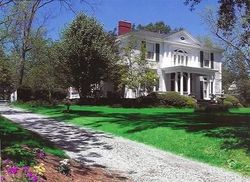
Tarleton Oaks Bed and Breakfast and The Gone With The Wind Hall of Stars Museum
